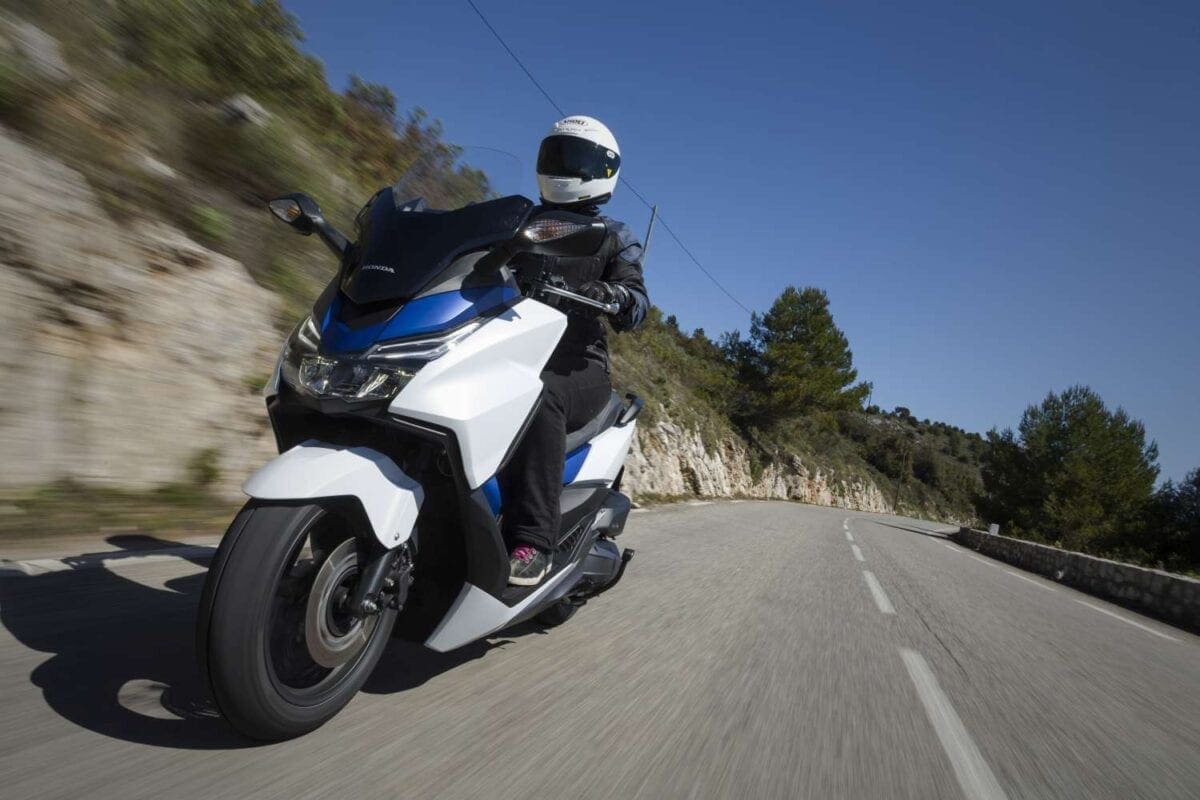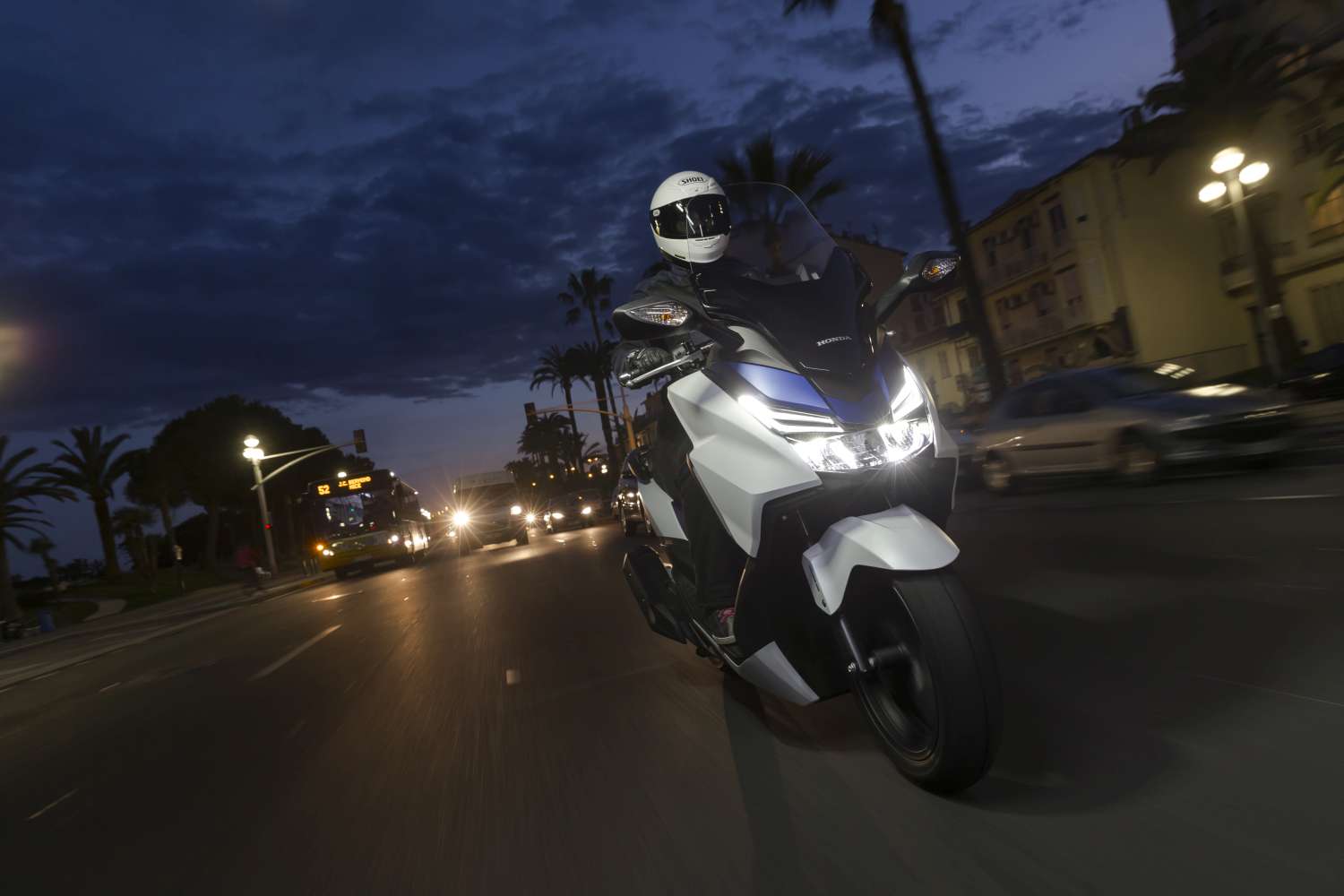
When you set out to design the new Forza, what were the three most important features that you based it around?
The top three features follow on from the design concept of the Forza – that it’s a scooter not just for in city use but for getting to the city on relatively high speed roads, so the three most important things follow from that concept. To satisfy those various demands, importance was placed on the overall handling and running performance, this was one of the things I wanted to stress. Agility and manoeuvrability in the city and stability at high speed was important too. Given that there is a wide range of people we’re aiming to reach, another important thing was that the bike had to look appealing to a lot of people – we put a lot of thought into that. It has a new design line, a new face of Honda scooters, to give people a sense of pride of ownership and so it has a strong identity to it. To recap, the three would be: design, in town ability and highway stability.
The machine had always been planned and purposefully designed as a 125 – are any plans for a larger capacity version?
That’s a difficult one to answer. At the moment we don’t have any plans but it has been interesting to hear some comments over the week of the launch. Because a lot of the concept is related to France – being the biggest market for the scooter by far. The licencing system in France is that you could ride a scooter on a car licence (depending when you got one) and even if it’s a new licence, you can complete seven hours of training and then you can ride a 125cc machine. With that being the main target, the Forza 125 fits into that requirement. If we were going to look again and ask ourselves whether we should make a 300, we would have to start with the customer needs, think again and then go back to the drawing board.
During your career, you’ve worked on a number of smaller capacity machines, why do you enjoy working on smaller capacity machines rather than the larger ones?
When it comes to the bigger bikes, like a super sport bike, it’s for people that like to ride and nail a corner and get the thrill of being in charge of such a powerful machine. With scooter and commuters, there are different nuances in the market. Largely speaking, people are more interested in them as a utility tool to get them to A and B but then there are people who are also interested in the scooter as a lifestyle accessory and as a fashion accessory. It’s because of these different nuances in the market, when you start working on a new scooter it’s a challenging project to make sure if meets all the requirements. It’s the complex user requirement which is the challenge and the enjoyment in it for me.
You had the role as Large Project Leader on the Forza, but how many projects do you work on at once and are there any you can tell us about?
I don’t just work on one, but I can’t really tell you exactly how many I work on at a time! As you suggested, I can’t tell you any of the new models that I am working on, but at the moment I am working on scooters not only for Europe but for the different regions of emerging markets to share the joy of scooters as a mode of transport – which is something I like to do myself and something I do in Japan. There’s always something in the pipeline…




